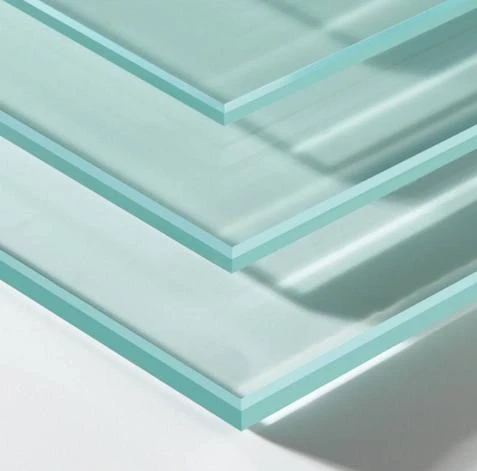Tempered Laminated Glass Specifications and Benefits
Tempered laminated glass has become a preferred choice in modern construction and architectural design due to its exceptional strength, safety features, and aesthetic appeal. This article delves into the specifications that define tempered laminated glass, highlighting its unique properties and applications.
What is Tempered Laminated Glass?
Tempered laminated glass is made by bonding two or more layers of glass, typically with a layer of polymer interlayer such as PVB (polyvinyl butyral) or EVA (ethylene-vinyl acetate) between them. The glass undergoes a tempering process, wherein it is heated to high temperatures and then rapidly cooled; this procedure enhances its strength and thermal resistance. The lamination process further enhances the durability of the glass, providing additional benefits such as improved sound insulation and UV protection.
Specifications
1. Thickness Tempered laminated glass usually comes in various thicknesses, typically ranging from 6mm to 12mm for residential applications. Commercial projects may utilize thicker variants to meet safety and design requirements. The combined thickness of the layers can also vary, allowing for customization based on specific needs.
2. Impact Resistance One of the key specifications of tempered laminated glass is its superior impact resistance. The interlayer holds the glass fragments together in the event of breakage, significantly reducing the risk of injury. This feature makes it ideal for applications in high-traffic areas or buildings where safety is paramount.
3. Thermal Performance Tempered laminated glass exhibits excellent thermal performance, minimizing heat transfer and improving energy efficiency. The glass can be manufactured to meet energy codes, making it a suitable choice for both residential and commercial buildings aiming for sustainability.
4. Acoustic Performance Laminated glass is known for its sound-dampening qualities. The interlayer effectively absorbs sound vibrations, making it a popular choice in urban environments where noise pollution can be a concern. The acoustic performance can be optimized by adjusting the thickness of the interlayers.
tempered laminated glass specification
5. UV Protection Tempered laminated glass offers enhanced protection against ultraviolet rays. The interlayer can block up to 99% of harmful UV rays, helping to prevent fading of interior furnishings and reducing the risk of skin damage.
6. Color and Tint Options Aesthetic customization is a significant advantage of tempered laminated glass. It can be produced in various tints and colors, allowing architects and designers to achieve desired visual effects while maintaining functional specifications.
7. Standard Compliance It’s crucial for tempered laminated glass to meet specific standards and certifications, such as those set by ASTM, ANSI, or ISO. Compliance ensures the glass product adheres to safety regulations, quality controls, and performance metrics.
Applications
Tempered laminated glass is versatile and finds applications in various settings, including
- Commercial Buildings Often used in storefronts and office buildings where safety and aesthetics matter.
- Residential Properties Ideal for windows, sliding doors, and glass railings, adding an elegant touch while ensuring safety.
- Curtain Walls Widely used in high-rise buildings for facade systems due to its strength and resistance to wind loads.
- Architectural Features Common in skylights, glass bridges, and other designs where visual appeal and safety must coexist.
Conclusion
In summary, tempered laminated glass stands out as a superior option for both safety and aesthetics in modern building design. Its robust specifications, including impact resistance, thermal performance, and UV protection, make it an ideal choice for a variety of applications. As architects and builders continue to prioritize sustainability and safety, the demand for high-quality tempered laminated glass is likely to grow, making it an essential material in the future of construction.
 Afrikaans
Afrikaans  Albanian
Albanian  Amharic
Amharic  Arabic
Arabic  Armenian
Armenian  Azerbaijani
Azerbaijani  Basque
Basque  Belarusian
Belarusian  Bengali
Bengali  Bosnian
Bosnian  Bulgarian
Bulgarian  Catalan
Catalan  Cebuano
Cebuano  Corsican
Corsican  Croatian
Croatian  Czech
Czech  Danish
Danish  Dutch
Dutch  English
English  Esperanto
Esperanto  Estonian
Estonian  Finnish
Finnish  French
French  Frisian
Frisian  Galician
Galician  Georgian
Georgian  German
German  Greek
Greek  Gujarati
Gujarati  Haitian Creole
Haitian Creole  hausa
hausa  hawaiian
hawaiian  Hebrew
Hebrew  Hindi
Hindi  Miao
Miao  Hungarian
Hungarian  Icelandic
Icelandic  igbo
igbo  Indonesian
Indonesian  irish
irish  Italian
Italian  Japanese
Japanese  Javanese
Javanese  Kannada
Kannada  kazakh
kazakh  Khmer
Khmer  Rwandese
Rwandese  Korean
Korean  Kurdish
Kurdish  Kyrgyz
Kyrgyz  Lao
Lao  Latin
Latin  Latvian
Latvian  Lithuanian
Lithuanian  Luxembourgish
Luxembourgish  Macedonian
Macedonian  Malgashi
Malgashi  Malay
Malay  Malayalam
Malayalam  Maltese
Maltese  Maori
Maori  Marathi
Marathi  Mongolian
Mongolian  Myanmar
Myanmar  Nepali
Nepali  Norwegian
Norwegian  Norwegian
Norwegian  Occitan
Occitan  Pashto
Pashto  Persian
Persian  Polish
Polish  Portuguese
Portuguese  Punjabi
Punjabi  Romanian
Romanian  Russian
Russian  Samoan
Samoan  Scottish Gaelic
Scottish Gaelic  Serbian
Serbian  Sesotho
Sesotho  Shona
Shona  Sindhi
Sindhi  Sinhala
Sinhala  Slovak
Slovak  Slovenian
Slovenian  Somali
Somali  Spanish
Spanish  Sundanese
Sundanese  Swahili
Swahili  Swedish
Swedish  Tagalog
Tagalog  Tajik
Tajik  Tamil
Tamil  Tatar
Tatar  Telugu
Telugu  Thai
Thai  Turkish
Turkish  Turkmen
Turkmen  Ukrainian
Ukrainian  Urdu
Urdu  Uighur
Uighur  Uzbek
Uzbek  Vietnamese
Vietnamese  Welsh
Welsh  Bantu
Bantu  Yiddish
Yiddish  Yoruba
Yoruba  Zulu
Zulu 

